A range of scales: from fusing a nucleus to studying a dwarf planet Understand article
Science in School is published by EIROforum, a collaboration between eight of Europe’s largest inter-governmental scientific research organisations (EIROs). This article reviews some of the latest news from EIROs.

EIROforum
EIROforum combines the resources, facilities and expertise of its member organisations to support European science in reaching its full potential.
EFDA-JET: Making a deliberate error for ITER
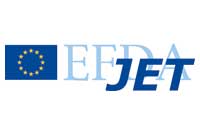
Forthcoming experiments at the Joint European Torus (JET), currently the world’s largest fusion energy experiment, will take a surprising twist, with some internal components being deliberately melted. The reason? In preparation for ITER, JET’s tenfold-larger successor, scientists will need to know what effect such melting would have on experiments.
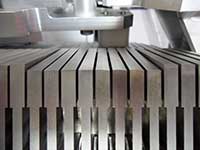
ITER is under construction in the south of France. It will create the first ever long-duration burning fusion plasma, which will inflict a heat load on the vessel that is equivalent to the temperature on the surface of the Sun. Astonishingly, ITER’s design engineers predict that tungsten tiles can withstand this condition during normal operation. However bursts of turbulence similar to solar flares may momentarily heat the tungsten above its melting point (3422 °C). To simulate this, a tile in JET has been deliberately misaligned to create transient melts. These will be superficial only and will not endanger the 700 tonne JET vessel, but the effect on the plasma – if any – will be vital information for the ITER design team.
To learn more about the fusion research at JET and ITER, see:
Rüth C (2012) Harnessing the power of the Sun: fusion reactors. Science in School 22: 42-48.
Dooley P (2012) Seeing the light: monitoring fusion experiments. Science in School 24: 12-16.
Dooley P (2013) A thermometer that goes to 200 million degrees. Science in School 26: 44-49.
Situated in Culham, UK, JET is Europe’s fusion device. Scientific exploitation of JET is undertaken through the European Fusion Development Agreement (EFDA).

EMBL: What an ‘X’perience!
Are you struggling to store all your movies on regular DVDs? A new method published by researchers at the European Bioinformatics Institute (EBI, part of the European Molecular Biology Laboratory, EMBL) makes it possible to store 100 million hours of high-definition videos in a cup of… DNA!
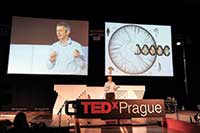
Talk
Image courtesy of Image
courtesy of Ondrej Vitousek
The team, led by Nick Goldman and Ewan Birney, designed a method to synthesise information into DNA, duplicate it, and read it back. Stored under the right conditions, DNA can last tens of thousands of years, as shown by studies of woolly mammoth remains. DNA is also very small and dense, and its code is universal: all qualities that could make it a very appealing technology for storing the enormous amounts of data generated in research facilities.
Nick Goldman introduced his team’s findings to a fascinated audience at a recent TEDx event in Prague, Czech Republic. The experience proved to be a high point in the popularisation of research on DNA storage.
To learn more, watch Nick Goldman’s talk on Youtube or read the press release on the EMBL website.
EMBL is Europe’s leading laboratory for basic research in molecular biology, with its headquarters in Heidelberg, Germany. The European Bioinformatics Institute is part of EMBL and is based in Cambridge, UK.
ESA: Is the ozone layer recovering?
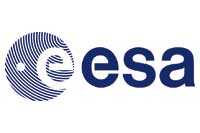
Since the 1980s, the emission of chlorofluorocarbon (CFC) gases has caused a hole to form in the protective ozone layer of the atmosphere. Weather conditions make the low levels of ozone particularly noticeable over the Antarctic in spring (September to November).

satellite Metop keeps an eye
on the ozone layer in the
atmosphere.
Image courtesy of ESA / AOES
Medialab
The European weather satellite Metop is monitoring the hole in the ozone layer, and the European Space Agency (ESA) Climate Change Initiative collects many measurements to track the changes over time.
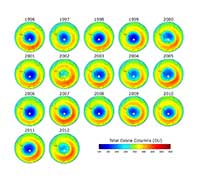
Antarctic from 1996 to 2012.
Blue indicates low levels of
ozone and shows the hole in
the ozone layer.
Image courtesy of BIRA / IASB
Since the reduction in CFC emissions in the 1990s, the hole has begun to shrink. The newest data from Metop show that the hole in the ozone layer over Antarctica in 2012 was the smallest it has been in a decade. CFC gases remain in the atmosphere for a very long time, but these promising results demonstrate that the ozone layer has begun to recover.
To learn more about the chemistry behind the hole in the ozone layer, see:
Harrison T, Shallcross D (2010) A hole in the sky. Science in School 17: 46-53.
ESA is Europe’s gateway to space, with its headquarters in Paris, France.
ESO: Dwarf planet Makemake lacks atmosphere: distant frigid world reveals its secrets

Astronomers used three telescopes at facilities of the European Southern Observatory (ESO) in Chile to observe the dwarf planet Makemake as it drifted in front of a distant star and blocked its light. The new observations have allowed them to check whether Makemake is surrounded by an atmosphere. This chilly world has an orbit lying in the outer Solar System and was expected to have an atmosphere like Pluto, but this has now been shown not to be the case.
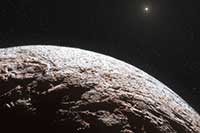
surface of the dwarf planet
Makemake
Image courtesy of ESO/ L
Calçada/ Nick Risinger
(skysurvey.org)
The scientists also measured Makemake’s density for the first time. The new results were published in the journal Nature.
This artist’s impression shows the surface of the distant dwarf planet Makemake. It is about two thirds of the size of Pluto, and travels around the Sun in a distant path that lies beyond that of Pluto, but closer to the Sun than Eris, the most massive known dwarf planet in the Solar System.
For more information, see the press release on the ESO website or refer to the original research paper:
Ortiz JL et al (2012) Albedo and atmospheric constraints of dwarf planet Makemake from a stellar occultation. Nature 491: 566–569. doi: 10.1038/nature11597
Download the article free of charge here, or subscribe to Nature today.
To learn about the discovery of Eris, the most massive known dwarf planet in the Solar System, see:
Hayes E (2011) How I killed Pluto: Mike Brown. Science in School 21: 6-11.
ESO is by far the world’s most productive ground-based astronomical observatory, with its headquarters in Garching near Munich, Germany, and its telescopes in Chile. ESO is the European partner in the ALMA project, which is a collaboration between Europe, North America and East Asia, in co-operation with the Republic of Chile.
ESRF and ILL: Crystallography? What is that?

Obviously, crystallography is the study of crystals, but it is also much more than that. Crystallography is a powerful technique that allows us to explore all sorts of material and even biological samples. It is a way to look at atoms and molecules and to understand how the world around us is ruled by these tiny bits of matter.
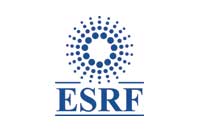
Modern crystallography started about one hundred years ago, when Max von Laue discovered that X-rays were diffracted by crystals. Soon after, William Lawrence Bragg, helped by his father, found that the X-ray diffraction patterns could reveal the intimate structure of matter. Laue and the Braggs received Nobel Prizes only two years after their discoveries, in 1914 and 1915, respectively. To celebrate this tremendous breakthrough, 2014 has been declared the International Year of Crystallography by the United Nations.
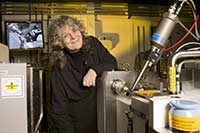
Winner in Chemistry, while
carrying out an experiment at
the ESRF to decipher the
structure of the ribosome. To
celebrate 100 years of
crystallography, she was
invited to Grenoble in March
2013 to give a lecture to the
general public entitled “Is
there a limit to life
expectancy? Wishes,
predictions and reality”.
Image courtesy of M Pelletier
and
C Bruneau
Today, crystallography is more active than ever thanks to the development of large-scale facilities such as very powerful X-ray sources, called synchrotrons, and neutron sources, which can both be compared to super-microscopes for the investigation of matter. In Grenoble, France, two world-class facilities are leading neutron and X-ray research: the Institut Laue Langevin (ILL) and the European Synchrotron Radiation Facility (ESRF). Every year, they welcome thousands of researchers from all over the world to perform crystallographic experiments.
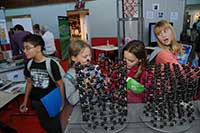
la Science in Grenoble
celebrated 100 years of
crystallography in October
2012.
Image courtesy of Serge
Claisse, ILL
ESRF and ILL started celebrating 100 years of crystallography in 2012 by co-organising various events. Much more is expected in 2013 and 2014: an exhibition, 3D digital animations and interactive educational material will be produced in various languages, together with many partners from across the world. We will keep you informed!
Learn more about the history of crystallography (currently only in French).
On the Nobel Prize website, find out more about the work of Max von Laue and the Braggs.
To find out more about crystallography, see also:
Cornuéjols D (2009) Biological crystals: at the interface between physics, chemistry and biology. Science in School 11: 70-76.
Haddow M (2012) The new definition of crystals – or how to win a Nobel Prize. Science in School 24: 59-63.
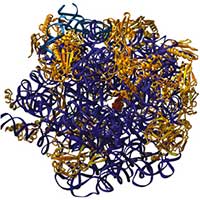
Image courtesy of ESRF
To learn how to grow your own protein crystals at school, see:
Blattmann B, Sticher P (2009) Growing crystals from protein. Science in School 11: 30-36.
Situated in Grenoble, France, ESRF operates the most powerful synchrotron radiation source in Europe.
ILL is an international research centre at the leading edge of neutron science and technology, based in Grenoble, France.






